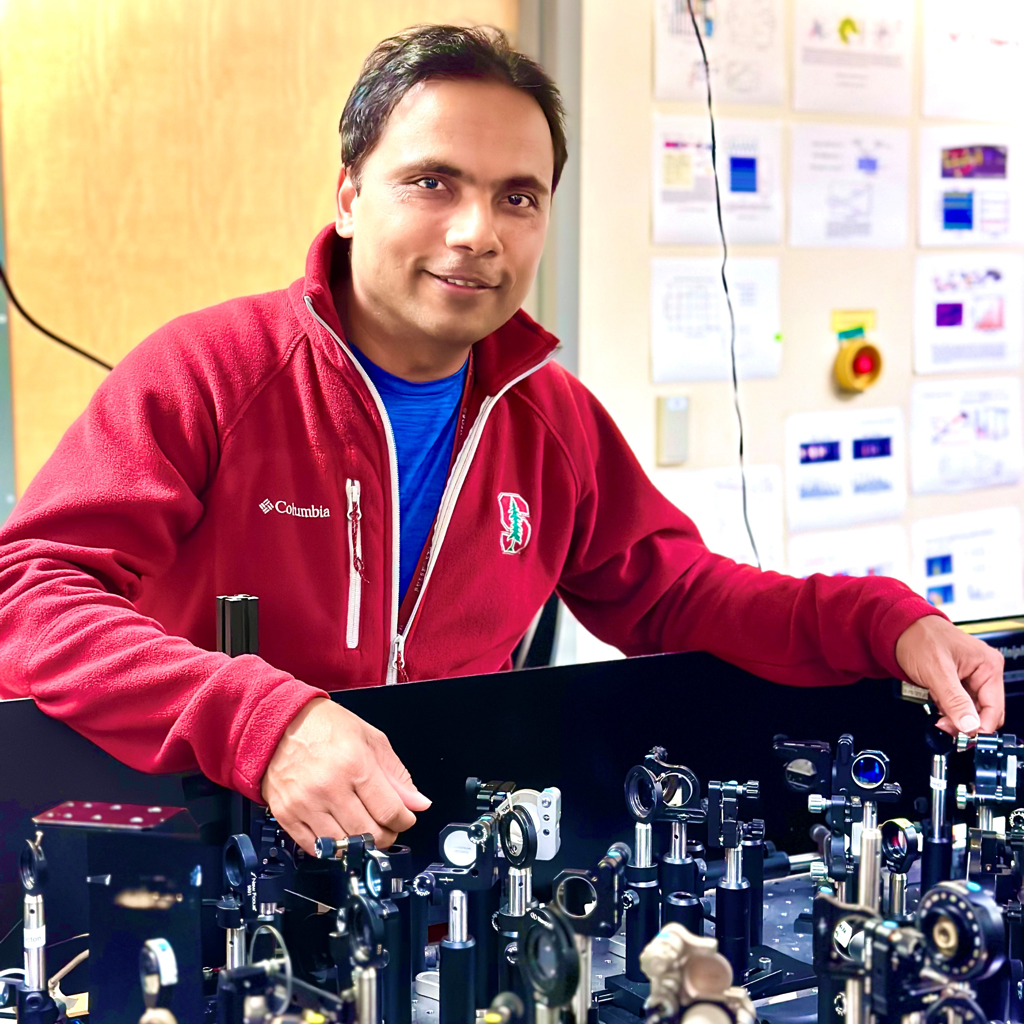Shambhu Ghimire
SLAC National Accelerator Laboratory, USAFor pioneering contributions to strong-field and attosecond physics in condensed matter, including nonperturbative high-harmonic generation from band-insulators and quantum materials.

Shambhu Ghimire didn’t have electricity at home until his family moved to a city when he was in sixth grade. In rural Nepal, he had to complete his homework before it became dark or wait until his mother finished the post-dinner household chores as they relied on one shared kerosene lamp, Tuki, for the whole family. His early interest in science centered around carefully observing natural phenomena like rainbows and asking naive questions, such as why the sun only rises from the east. When the family moved, Shambhu was awed by electricity, and he remembers staying up that first night, reading books and admiring the brightness in the whole room.
Even in Kathmandu, the capital city, access to information and training was still tricky. There was still no internet or email to students; the best way to learn about worldwide opportunities was by visiting the local British or American Library. When Shambhu was considering pursuing a PhD, the library had brochures and printed information on many different schools from all over the world. Coming from such an isolated place, Shambhu comments, “In some sense, I had everything. I could go anywhere, to any country. I didn’t have friends in a specific place, and nothing was constraining me. In the other sense, there was no financial support.”
At the time, the most significant barrier Shambhu faced was the application fee. Without a bank account or credit card, he had no way to pay the fee that many college students never think twice about. Alongside his application (which he compiled and post-mailed to the universities), he offered that, if accepted, he would be happy to pay back the fee out of his first stipend paycheck as soon as he arrived. Eventually, Kansas State University, USA, replied with a parcel of acceptance documents and an application fee waiver, everything via regular post-mail.
When Shambhu left the Himalayan nation and arrived at Kansas State, he recalls thinking, “Wow, the earth really is flat!” He met his PhD advisor, Zenghu Chang, who explained Shambhu’s research topic very simply: Produce the shortest laser pulse and then measure it. Shocked by the apparent ease, Shambhu got right to work but quickly realized how complex the topic would be to tackle. Using the non-linear optical process called high-order harmonic generation, the team sought to produce isolated attosecond pulses in molecular and atomic systems. While Shambhu left the group after completing his degree, the group eventually beat the world record for shortest laser pulse, twice.
Shambhu took a different path after completing his PhD into condensed matter and solid state physics, where he was interested in applying the same techniques he learned in Kansas. He wanted to explore whether the same high harmonic generation processes that worked well on atoms in the gas phases would also work on a solid with a much higher atom density. After teaching himself all about solid-state physics and condensed matter during a postdoc at the University of Michigan, he moved to SLAC in 2009 to work with the Linac Coherent Light Source (LCLS), the first x-ray free electron laser. In 2010, the team published the first experimental results demonstrating high harmonic generation from a solid. Essentially, this created a new field at the intersection of ultrafast AMO, condensed matter physics, and materials science, which is exciting for Shambhu because he gets to experience many different areas of science coming together. He shares, “I used to have trouble speaking the language of two different fields, but I realized it was worth the switch…once you are in one field, you never lose that. When you transition, you make new friends, and that is very rewarding.”
Thinking back to early childhood, Shambhu acknowledges the incredible opportunities he’s had over the years to get to his current position. He felt the same way about the LCLS experiment as he did when he first experienced electricity in sixth grade. Wonder, excitement, and curiosity all at once. His career is a clear illustration that optics is everywhere and for everyone. While there is very little scientific research in a lab in the Himalayas, there are still curious minds. Shambhu shares that in some parts of the mountains, people utilize parabolic mirrors to focus sunlight that becomes very bright and gets hot enough to cook a potato, for example. It is communities like this that Shambhu hopes societies like Optica can aid. He appreciates how Optica crosses borders both geographically and scientifically and embraces diversity in many ways.
Photo courtesy of Shambhu Ghimire
Profile written by Samantha Hornback
